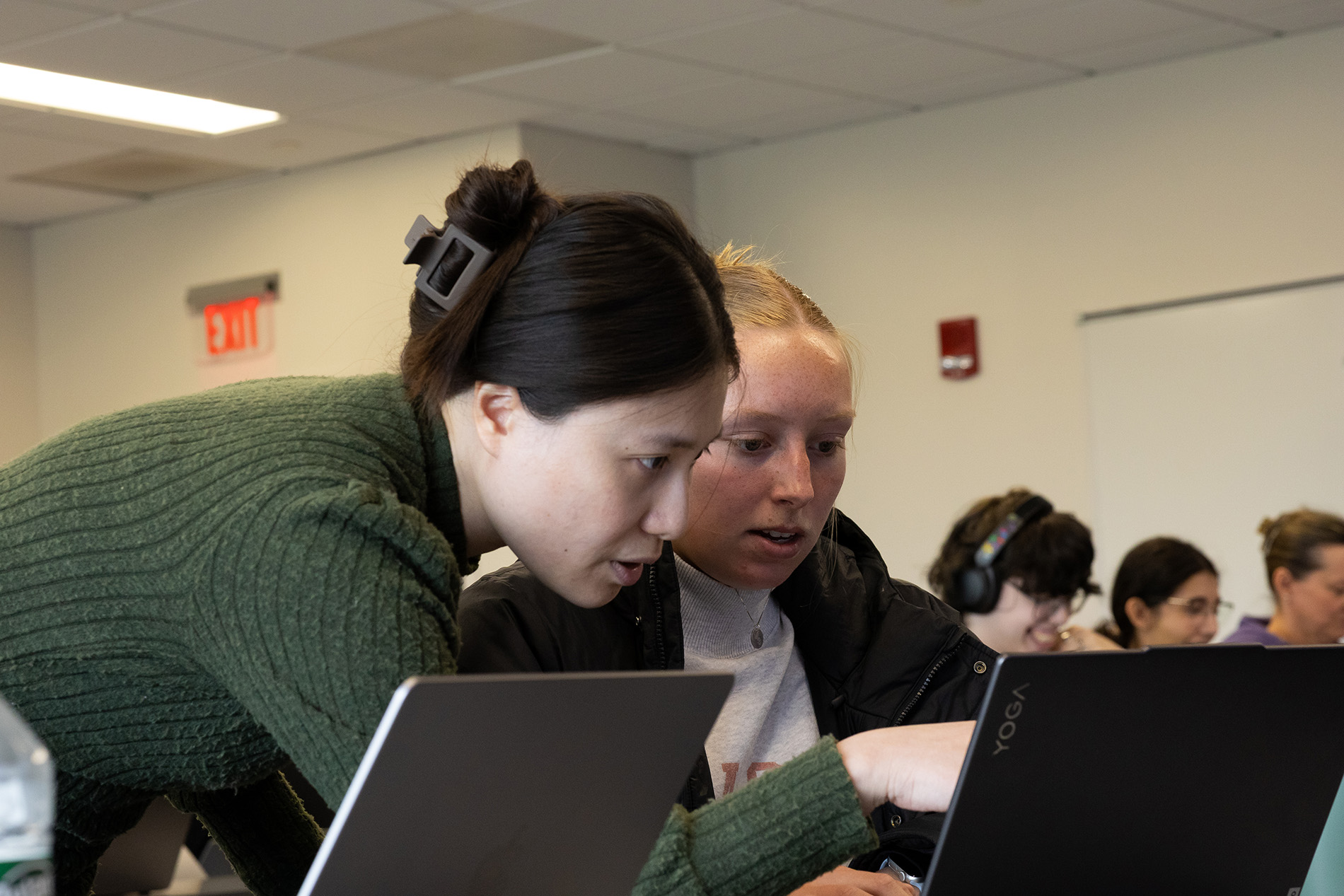Atmospheric Science Undergrad Class Exposes Students to AI-Driven Weather Prediction
By Mike Nolan
ALBANY, N.Y. (May 13, 2025) — Tracking trends in weather data is increasingly important, helping researchers gain crucial insight into our natural world: from rising global temperatures and air pollution levels to shifts in biodiversity and the frequency and severity of storms.
A group of about 30 undergraduate students in the Department of Atmospheric and Environmental Sciences at the College of Arts and Sciences spent the semester analyzing trends in environmental data and learning how it can be used to develop machine learning tools that support weather forecasting and disaster preparedness.
Embracing AI in the Classroom
Environmental Statistics and Computation, open to sophomores, juniors and seniors, was taught this semester by Zheng Wu, an assistant professor in Atmospheric and Environmental Sciences who was hired as part of the University at Albany’s artificial intelligence faculty cluster hire in 2023.
The 27 new hires — the largest cluster hire in the University’s history — have helped lay the foundation for new AI-related coursework at UAlbany. Through the AI Plus initiative, each of the University’s nine schools and colleges have been challenged to integrate teaching about AI into their curriculum.
“While this course is focused on environmental statistics and computation, it also serves as an introduction to how this data can be leveraged to create AI tools that support weather and climate prediction,” said Wu, whose research focuses on the use of machine learning techniques to help improve our understanding of atmospheric predictability.
“Incorporating these technologies at the undergraduate level is important to prepare students for the future digital world. It provides them with a set of interdisciplinary skills that they can use as weather researchers, or across many other industries.”
Weather Forecasting and Machine Learning
Wu’s class met on Mondays, Wednesdays and Fridays, introducing basic concepts and methods of statistical data analysis and applying them to atmospheric and environmental data.

Monday and Wednesday classes were lecture-based, and Fridays were lab-based, where students worked on programming for data analysis and visualization.
As one exercise, the students were tasked with building a neural network (machine learning) model to predict ENSO events, which stands for El Niño-Southern Oscillation. This is a natural climate pattern in the tropical Pacific Ocean that swings between the warm phase (El Niño) and the cool phase (La Niña). Both phases can affect our weather significantly.
Based on the current spatial patterns of sea surface temperature, the students aimed to build a model that can predict whether there is going to be an El Niño or La Niña event in the coming months.
Real World Application
Quintin Ashley, a junior atmospheric science major, was among the students in Wu’s class this semester. After graduation, he hopes to use his coding skills to research small-scale weather phenomena like thunderstorms and tornadoes, known as mesoscale meteorology.
“This semester, I’ve been interning on campus with the New York State Mesonet,” said Ashley. “Being able to get real world experience through opportunities at ETEC, along with classes like this one, has been, for lack of a better word, awesome. It sets us up for the future.”
Adriana Saint-Hilaire, a sophomore atmospheric science major, was also in Wu’s class this semester. She’s interested in a career that supports emergency preparedness around severe weather events.
“Ever since I was little, science was always my best subject and the weather is what interested me most,” said Saint-Hilaire, who is also an emergency preparedness minor. “This class is giving us a better understanding of the numbers behind weather forecasting and how we can use them.”
Since the launch of AI Plus, UAlbany has been focused on developing new AI-related courses. This includes a three-tiered progression of coursework available to every student in every major. This progression carries students from a general understanding of AI principles to discipline-specific courses focused on the potential societal risks of AI, algorithmic bias, decision making and security, as well as ethics, equity and privacy.




